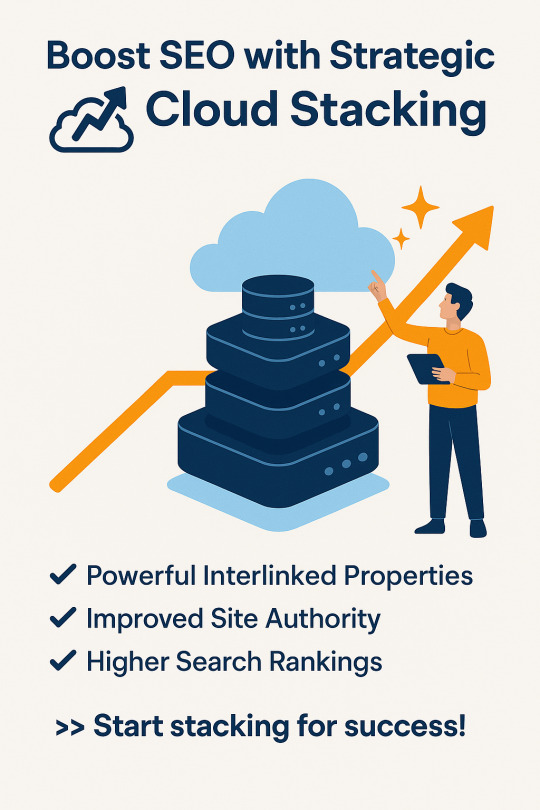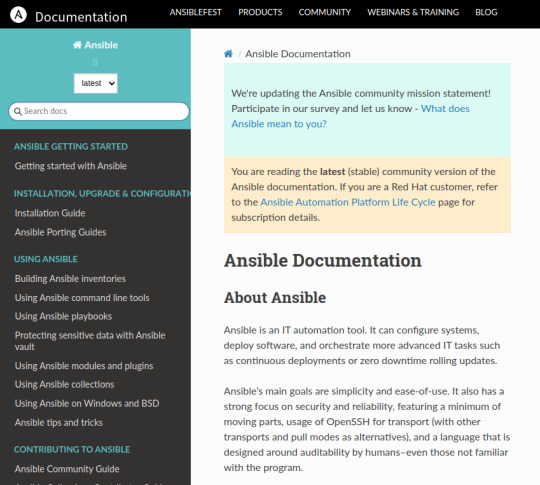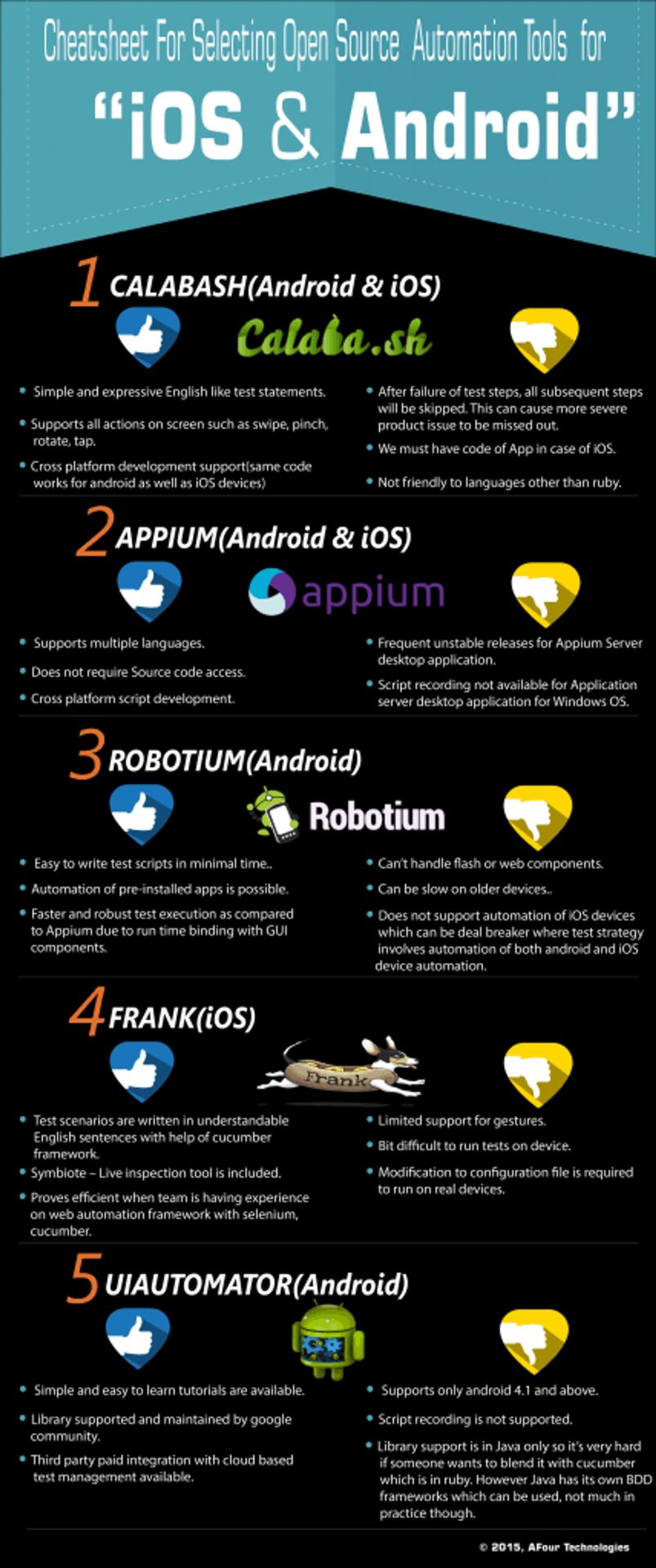#CloudStack
Explore tagged Tumblr posts
Text
Productivity isn’t about working more. It’s about managing better. TDZ Pro used tech for clarity, not clutter.
#TeamClarity#RemoteExecution#TDZPro#SmartTooling#StartupWins#LeanSystems#FocusTools#DigitalManagement#StartupEssentials#RemoteTeamTools#CloudStack
2 notes
·
View notes
Text

Skyrocket SEO with Powerful Cloud Stacking Backlinks Boost your website authority using cloud stacking—safe, effective, and SEO-friendly! Get top-tier links from trusted cloud platforms. ✅ Enhance online visibility ✅ Improve Google rankings 🚀 Start your cloud stacking strategy today! https://digitalmarketingexpertteam.com/cloud-stacking/
0 notes
Text
Can you rank a GBP with cloud links?
Can you rank a GBP with cloud links?
Three weeks ago I uploaded a video about my process of building out cloud stacks using schema from schemawriter and cloud links from YACSS.
In this video I will show you the results from an actual real life campaign.
Cloud links are among the most powerful free backlinks you can create. They are static html sites uploaded to google cloud, amazon s3 cloud and Microsoft Azure cloud, and deliver contextual, strong links to what you decide.

cloud links
#seo#jesper nissen seo#linkbuilding#cloudstacking seo#youtube seo#jesper nissen#cloud stacking seo#cloudstacking#cloud links
1 note
·
View note
Text
Exploring The Future Of Open-Source Cloud Computing

We bet you have a favorite dish with a secret recipe you keep to yourself. No, we're not psychic!
While some prefer to keep their recipes secret, others share them for everyone’s benefit. For example, if your dish is too salty, adding lemon juice can balance it out. This is a form of open-source knowledge!
Open-source knowledge isn’t limited to cooking. It’s prevalent in technology, where it’s used for public applications and software. Open-source technology is crucial in cloud computing too. So, how does it work and what’s the future? This article explores these questions and more.
Explore the future of Open-source Cloud Computing! Cloud computing has revolutionized business operations with flexible, scalable, and cost-effective solutions. As technology advances, the difference between open-source and proprietary options becomes clearer.
According to the 2015 Future of Open-Source Survey, 78% of companies use some form of open-source software. Since 2010, the global use of open-source software in business IT has nearly doubled. This shows how businesses prefer open-source platforms.
In the late 90s, open-source software (OSS) gained popularity due to cost-free implementation. Today, the focus is on customization. Open-source software allows businesses to tailor solutions to their needs, something proprietary systems often lack. This seamless integration gives decision-makers more control over their IT environments.
Fascinating, right? Before we dive into the future of Open-source Cloud Computing, let’s understand what it is first.
Understanding Open-Source Cloud Computing
Open-source Cloud Computing uses cloud services built on open-source software. Unlike proprietary cloud solutions, open-source cloud platforms allow users to access, modify, and distribute the source code. This offers greater flexibility and customization, helping businesses build cloud environments to their specific needs without vendor lock-in.
Open-source platforms like OpenStack and Kubernetes help build and manage robust cloud infrastructures. The collaborative nature of open-source communities ensures continuous improvements and innovation, keeping these platforms reliable and up-to-date. No more waiting for proprietary solution updates!
Now that we understand Open-source Cloud Computing, let’s look at its benefits.
Benefits Of Open-Source Cloud Computing
Open-source cloud technologies offer several benefits in performance, cost-effectiveness, security, and innovation:
Performance Open-source cloud platforms provide significant performance advantages. They enable easy scalability and resource adjustments to meet demands, ensuring optimal performance and eliminating bottlenecks. They often include redundancy and failover mechanisms for high service availability.
Cost-effectiveness Open-source cloud technologies eliminate the need for expensive licensing fees, making them more affordable for businesses of all sizes. They offer greater control, flexibility, and prevent dependence on vendors who might hike prices.
Security Continuous security audits by a diverse community ensure vulnerabilities are quickly identified and addressed. Customization allows businesses to take additional security measures to meet their specific needs.
Innovation Open-source cloud technologies benefit from vibrant developer communities that actively contribute to improvement and expansion. They allow rapid development and deployment of new services, reducing time-to-market and helping organizations stay competitive. That’s a first-mover advantage!
With their advantages in performance, cost-effectiveness, security, and innovation, open-source cloud technologies are shaping the future of cloud computing. Before we talk about the future, here are some key open-source cloud platforms on the market.
Popular Open-Source Cloud Platforms In The Market
Here are some popular open-source cloud platforms and their advantages:
OpenStack OpenStack is a widely used open-source cloud computing platform that provides Infrastructure-as-a-Service (IaaS). It allows organizations to build and manage private or public clouds by offering services like virtual machine provisioning, storage management, and network connectivity.
Kubernetes Kubernetes, also known as K8s, is an open-source container orchestration platform that automates the deployment, scaling, and management of containerized applications. It simplifies the management of complex container environments and enables seamless scaling across clusters. It allows effortless scaling of applications by adding or removing containers based on workload.
Apache CloudStack Apache CloudStack is an open-source cloud management platform that enables the creation, provisioning, and management of infrastructure cloud services. It provides tools to build and manage public, private, or hybrid cloud environments. CloudStack offers advanced networking capabilities, such as virtual routers, load balancing, and firewalls.
Using these open-source cloud platforms, you can harness their flexibility, scalability, and cost-effectiveness, opening many future opportunities.
Thank you for waiting patiently. Let’s peek into the future of Open-Source Cloud Computing!
The Future of Open-Source Cloud Computing
The future of open-source cloud technologies is transformative, driven by the integration of Artificial Intelligence (AI), machine learning, and edge computing. It will enhance cloud computing capabilities and unlock various possibilities, pushing the boundaries of what cloud solutions can achieve.
The open-source community will play a crucial role in establishing common standards. This collaborative effort will ensure various open-source cloud technologies work together seamlessly, promoting global innovation and efficiency.
The shift towards decentralization and edge computing will be significant. With IoT devices advancing, the need for efficiency and a more distributed cloud infrastructure is increasing. Open-source cloud solutions are agile and efficient, fulfilling the needs of both businesses and individuals.
Security and compliance will remain important as businesses rely on cloud solutions for sensitive operations. Technologies will evolve to provide robust security frameworks, addressing concerns and increasing user confidence.
This evolution will pave the way for broader adoption, ensuring open-source cloud technologies remain a trusted choice for businesses. On that note, let’s sum up this article!
To Sum Up
"Innovation distinguishes between a leader and a follower." - Steve Jobs, founder of Apple.
Looking at the future of Open-source Cloud Computing, its innovative nature will make its adopters leaders in the ever-evolving business landscape. The integration of AI, machine learning, and edge computing will redefine open-source cloud capabilities, offering new levels of performance and flexibility. Open-source technologies will drive progress and help businesses stay ahead with publicly accessible, cutting-edge solutions.
So, what are you waiting for? Embrace the open-source cloud and open doors to endless possibilities for growth and success!
0 notes
Video
youtube
How To Setup Instance Apache CloudStack Using XCP-NG
1 note
·
View note
Text
Unmanned Traffic Management Market: Precision Aerial Operations

As per Inkwood Research, the global unmanned traffic management market is approximated to grow with a CAGR of 15.45% during the forecast period of 2024 to 2032. Unmanned aerial system (UAS) traffic management is a comprehensive system designed to manage the airspace for unmanned aerial vehicles (UAVs) or drones. It includes technologies and protocols to ensure safe and efficient integration into the national airspace system.
The key components included are airspace management, communication networks, tracking, safety mechanisms, regulatory compliance, data sharing, and scalability. UTM is essential for the widespread use of drones in various applications, promoting safety, adherence to regulations, and seamless coordination between drone operators and air traffic management authorities.
Further, UTM serves as a digital infrastructure, integrating real-time data and communication systems to ensure efficient coordination and safe navigation for unmanned aerial systems. It fosters a balance between innovation and safety, providing a framework for managing the increasing density of drones in the airspace.
Request a FREE sample of the Unmanned Traffic Management Market
UAVs: Applications in Automated UTM
The use of unmanned aerial vehicles (UAVs) is expanding across various civil applications. These include territorial security, infrastructure monitoring, remote sensing, aerial photography, environmental monitoring, search and rescue, and video recordings.
Drones fall into two categories: Remotely piloted aircraft systems (RPAS) operated by a remote pilot and autonomous UAVs without a remote pilot.
Currently, most drone operations occur outside controlled airspace, specifically in the very low level (VLL) volume, shared with general aviation, helicopters, gliders, balloons, and microlights.
Operating in this airspace sets potential risks to safety, security, and privacy. To address these concerns, an automated system known as UAV traffic management (UTM) is vital for effective and secure drone management in the airspace.
UAS Traffic Management: Automating Drone Airspace
Unmanned aerial system (UAS) traffic management foresees an automated system for low-level airspace specifically designed for unmanned aircraft weighing under 25 kg.
This concept is rapidly advancing across various states, universities, and aviation entities. In response to the 39th Assembly’s request to include all unmanned aircraft in ICAO’s work program, the Drone Enable Symposium was launched.
Held in Montréal with 429 participants, the symposium introduced a unique approach, highlighting advanced subject matter related to unmanned aircraft.
It emphasized UAS traffic management (UTM) and the essential implementation requirements, encompassing registration, identification, tracking, communication systems, and geo-fencing-like technology.
Get CUSTOMIZED insights fine-tuned to match your unique requirements delivered right to your inbox!
Cloud-Driven UTM: UAS Management Implementation Insights
UTM in unmanned aerial systems management functions as a practical system, transitioning from an active ‘Platform as a Service’ (PaaS) to directly ‘Software as a Service’ (SaaS) applications.
UTM excels in seamlessly integrating various software solutions, like payload cloud data storage, enhancing overall functionality. It transforms into user-friendly applications, simplifying UAS management for all stakeholders.
The technical side involves virtualizing software components into a cloud architecture using the Apache CloudStack platform for reliability.
With scalability, high performance, and continuous service availability, UTM is important in unmanned aerial system traffic management. Further, cost optimization strategies make UAS management economically viable.
Stay up-to-date with what’s trending in the global unmanned traffic management market
Future Outlook: Aerial Traffic Management
In recent years, the surge in unmanned aerial systems (UAS), commonly known as drones, has marked a revolutionary shift in commercial and civil applications.
Recent studies project a significant upswing, with an estimated 400,000 drones dominating airspace and a substantial market value of 10 billion euros annually by 2035.
Traditionally reliant on voice communication, the rise in UAS operations challenges the scalability of this centralized approach. This shift necessitates a new framework in airspace management, emphasizing digital communication and shared responsibilities among stakeholders.
Initiatives like NASA’s UAS traffic management (UTM) and Europe’s U-space ecosystem are in the lead in addressing this challenge. In this regard, the European Aviation Safety Agency (EASA) proposed a U-space ecosystem featuring a cloud-based U-space service provider platform.
Central to this architecture is the UTM system, with its software framework providing U-space services to various participants, facilitated by the U-space service manager (USM).
As technology evolves, automated drones and cloud-driven UTM reconfigure unmanned traffic management globally. A focused effort to enhance efficiency, safety, and overall system performance is anticipated to drive unmanned traffic management market growth over the forecasting period.
Can’t find what you’re looking for? Talk to an expert NOW!
FAQ
How does UTM contribute to the safe integration of drones into airspace?
UTM utilizes advanced technologies such as real-time tracking, geofencing, and communication systems to monitor and manage drone traffic, preventing collisions and ensuring safe coexistence with traditional manned aircraft.
How does UTM enhance the efficiency and safety of drone operations?UTM optimizes drone traffic, manages airspace actively, and provides real-time information to operators, enhancing operational efficiency while prioritizing safety through collision avoidance measures.
0 notes
Text

☁️Cloud stack☁️
A while ago I was tagged to do a #cloudstack. These are all books I’d like to read/reread this year.
☁️☁️☁️
https://www.instagram.com/pocketlit/
#booklr#bookstagram#booksbooksbooks#books#igreads#readersofinstagram#whitestack#bookstack#cloudstack
19 notes
·
View notes
Text
コンピューターシステムの構成管理
場末のプログラマ���としてのキャリアは長いものの、大きな企業内のコンピューターシステムを管理するといった仕事はしたことはありません。だからと言って知らないでは済まされないように感じます。 モノづくり塾では生産系とIT系のどちらもモノづくりの対象として扱いますし、最近流行りのWeb 3.0やブロックチェーンといったものの仕組みを理解しシステムを構築できるようになることは、これからモノづくりやITの世界で活躍していくには必要な技能だと思います。 所謂Web…

View On WordPress
0 notes
Text
Cloud Computing and Linux: A Match Made in Heaven
Cloud computing has revolutionized the way businesses operate by providing scalable, cost-effective, and secure IT infrastructure. As more and more companies move their operations to the cloud, Linux has emerged as the dominant operating system in the cloud computing space. In this blog post, we will explore how Linux and cloud computing are a match made in heaven Linux’s Open-Source Nature Linux…

View On WordPress
#ChatGPT#Cloud Computing#CloudStack#Linux#Linux Cloud#Linux Community#Opensource cloud#OpenStack#technology
0 notes
Photo

AFour Technologies is a software development services, ISO certified company, offers Product Engineering Services with in Data Center Technologies IoT, automation testing company, cyber security testing services
#customer success#data architecture#security architecture#infrastructure management#cloudstack#ui ux design#cicd pipeline#software testing
1 note
·
View note
Text
Skyrocket SEO with Powerful Cloud Stacking Backlinks Boost your website authority using cloud stacking—safe, effective, and SEO-friendly! Get top-tier links from trusted cloud platforms. ✅ Enhance online visibility ✅ Improve Google rankings 🚀 Start your cloud stacking strategy today! https://digitalmarketingexpertteam.com/cloud-stacking/
0 notes
Text
Parasite SEO using schemawriter
Youtube parasite seo is the hot topic of 2024, and in this video I will show how I managed to grab three first page positions in less than 24 hours.
I did that by a combination of the Youtube video, the Reddit post and the entity optimized blogpost on my own website. I used schemawriter to optimize my blogpost to ensure, that I have the most relevant entites and longtail keywords in my content.
As a vital part of this digital marketing strategy, I also used the advanced article and webpage schema produced by schemawriter.
0 notes
Video
tumblr
Accelerate your business, with our all in one cloud management portal for cloud powered by Apache CloudStack. For more information, visit: stackconsole.io
#hostbill demo#hostbill app#cmp cloudstack#cmp apache cloudstack#CloudStack billing open source#cloudstack#apache cloudstack#cloud computing platform#cloud management platform#cloud management portal#cloudstack billing
0 notes
Photo

#cloudstack sur le #westlake de #hangzhou en #chine #timestack in #china ... #cloud #lake #cloudstacking #timestacking #bluesky #cielbleu (à West lake, Hangzhou)
#cloudstack#lake#chine#cloud#westlake#hangzhou#china#timestack#cloudstacking#cielbleu#timestacking#bluesky
2 notes
·
View notes